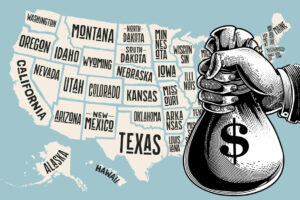A block grant is an annual sum of money that is awarded by the federal government to a state or local government body to assist fund a particular project or program.
Block grants have dropped from favor in recent decades. A 2017 effort to revamp Medicaid as a block grant program didn’t succeed.
Still, lots of block grant applications still exist. One enduring example is the Community Development Block Grant (CDBG) program under the U.S. Department of Housing and Urban Development, which has been moving since 1974.
Understanding the Block Grant
Contents
Block grants have been in use in some form since the 1950s. Many have supported social services, public health services, or community improvement programs.
Critics of block grant programs cite that the comparative lack of federal oversight for a problem. Notably, the proposal to turn Medicaid into a block grant program has been seen as threatening the federal government’s ability to guarantee a standard level of service.
Block licenses are federal funds earmarked for a particular state or local programs.
A block grant is supported by federal funds but handled by state or local authorities.
Block grants were developed to give funding for those providers with relatively few strings attached, allowing local governments to oversee and manage the programs.

Block grants
Additionally, state and local authorities may add their own guidelines and will sometimes distribute a portion of the grant into other organizations, which also have their own rules and guidelines concerning how the cash is used and for what purpose.
Examples of Block Grants
Three of the better-known block grant applications are earmarked for social services delivered at the local level:
The CDBG program, administered by the Housing and Urban Development service, is widely described as functioning to ensure decent affordable housing, to provide services to the vulnerable in our communities, and to create jobs through the expansion and retention of businesses,” according to the agency. It provided annual grants to 1,209 state and local government agencies in 2018.
Block licenses are in use since the 1950s but have fallen from favor in recent decades.
The grant levels are given according to a formula based on a community’s requirement, including its scope of poverty, overcrowding, and population growth.
- The Mental Health Block Grant (MHBG)
The Mental Health Block Grant, established in 1981, has spawned tens of thousands of dollars to countries to assist in the treatment of mental disorders.
The grant was amended in 1986 to require that countries develop its solutions based on the information of Mental Health Planning Councils comprised primarily of family members and non-treating professional citizens.
- The Social Services Block Grant Program (SSBG)
The Social Services Block Grant Program (SSBG) is a broadly defined program that allows states and territories to tailor social service programming to the needs of their populations.
Administered by Health and Human Services, the program is intended to”reduce dependency and promote self-sufficiency; shield children and adults from neglect, abuse and exploitation; and also assist people that are not able to look after themselves to remain in their homes or to discover the best institutional arrangements,” according to the department’s Office of Community Services.
